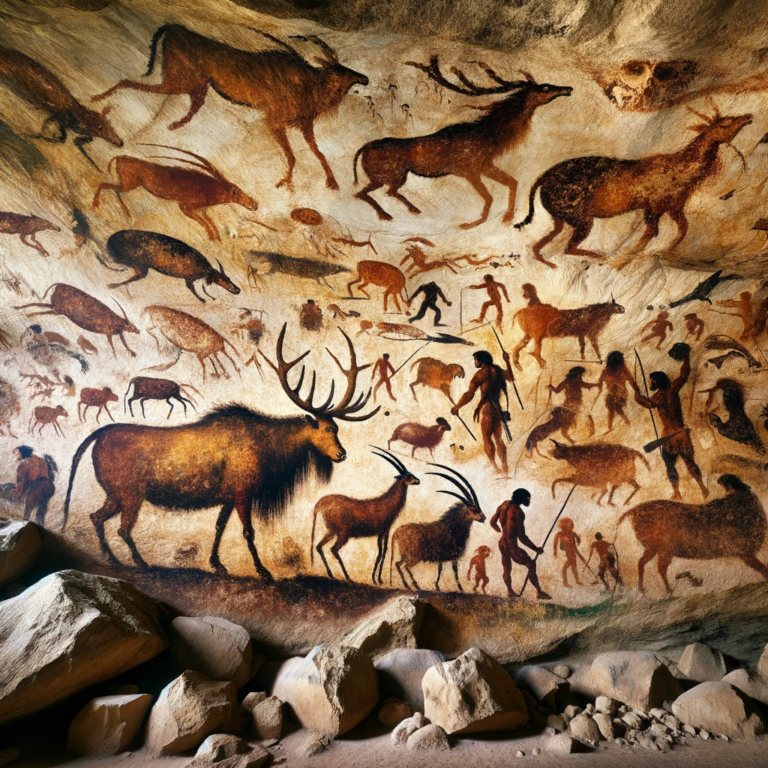If you’re looking to foster creativity and encourage artistic expression in your child, there are a number of ways to do so. Whether your child is already showing an interest in the arts or you’re looking to introduce them to new artistic experiences, there are plenty of activities and opportunities that can help them develop their skills and talents.
In this article, we’ll explore 10 cool facts that can help develop child artists, with plenty of tips, tricks, and suggestions for parents, teachers, and anyone else who wants to inspire and encourage creativity in children.
- Creativity is a Skill That Can Be Developed
Contrary to popular belief, creativity is not just an innate talent that some people are born with and others are not. Creativity is actually a skill that can be developed and improved over time, through practice, experimentation, and exposure to new ideas and experiences. Encouraging your child to explore different artistic mediums, experiment with new techniques, and try new things can help them develop their creative skills and unlock their full potential as artists.
- Art Education Can Enhance Academic Performance
Studies have shown that children who receive a well-rounded arts education are often more successful in other academic areas as well. Exposure to the arts can help develop critical thinking skills, enhance problem-solving abilities, and promote academic success in subjects like math, science, and literature. Encouraging your child to pursue art as part of their education can have a positive impact on their academic performance and future success.
- Practice Makes Perfect
As with any skill, practice is essential for developing artistic abilities. Encouraging your child to practice their art regularly, even if it’s just for a few minutes each day, can help them hone their skills and develop their creativity. Whether it’s drawing, painting, sculpting, or any other form of art, setting aside time for regular practice can help your child make significant strides in their artistic development.
- Collaboration and Critique Can Improve Artistic Skills
Working with other artists and receiving constructive criticism can be a powerful tool for improving artistic skills. Encouraging your child to collaborate with other artists, join a local art club, or participate in art competitions can help them develop their skills and receive feedback on their work. Critique can be a valuable tool for identifying areas for improvement and developing new techniques, and working with other artists can help your child learn new perspectives and approaches to art.
- Creativity Flourishes in an Open Environment
Creating a nurturing and supportive environment for artistic expression can be instrumental in helping your child develop their creative skills. Providing the right tools and materials, setting aside a dedicated space for art, and encouraging your child to explore their interests and passions can all help create an open and supportive environment for creativity to flourish.
- Inspiration Can Come from Anywhere
Encouraging your child to find inspiration in everyday life can be a powerful tool for fostering creativity. Encourage your child to explore their environment, look for patterns and shapes, and take inspiration from the world around them. Exposing your child to art and other cultural experiences can also help broaden their perspective and provide new sources of inspiration for their artistic endeavors.
- Artistic Expression Can Help Build Confidence
For many children, art can be a powerful tool for building confidence and self-esteem. Encouraging your child to express themselves through art, and recognizing and celebrating their achievements, can help them build a sense of pride and self-assurance in their abilities. This confidence can extend beyond their artistic pursuits and have a positive impact on other areas
As parents, we all want to encourage and support our children’s creative abilities. Art is a great way for children to express themselves and develop important skills such as problem-solving, critical thinking, and emotional intelligence. However, not all children are naturally inclined towards art, and it can be challenging to find ways to help them develop their skills. In this article, we will explore 10 cool facts to develop child artists that can help parents and teachers encourage and support children in their artistic endeavors.
- Art is a language Art is a universal language that can be used to express emotions, thoughts, and ideas. Teaching children about different forms of art and introducing them to various techniques and mediums can help them develop their artistic vocabulary and express themselves more confidently.
- Creativity is a skill that can be developed Contrary to popular belief, creativity is not an innate talent, but a skill that can be developed with practice and experience. Encouraging children to experiment with different materials, try new techniques, and take risks can help them develop their creativity and artistic skills.
- Exposure to art can enhance cognitive development Studies have shown that exposure to art can enhance cognitive development in children, including improved memory, problem-solving skills, and critical thinking abilities. Additionally, creating art can help children learn to focus and concentrate, which can improve their academic performance.
- Art can foster emotional intelligence Creating art can be a therapeutic process that allows children to express their emotions and develop emotional intelligence. Through art, children can learn to identify and regulate their emotions, build empathy and understanding of others, and communicate their feelings in a healthy way.
- Collaboration can enhance creativity Collaborative art projects can help children develop important social and emotional skills, such as communication, cooperation, and respect for others’ ideas. Working together on a project can also enhance creativity by allowing children to share ideas and build on each other’s strengths.
- Art can promote cultural awareness Introducing children to art from different cultures can help them develop an appreciation for diversity and promote cultural awareness. Learning about different artistic traditions and techniques can also inspire children to create their own unique art.
- Art can be used to teach other subjects Art can be integrated into other subjects such as science, math, and history, to enhance learning and make it more engaging. For example, creating art projects based on science experiments can help children better understand scientific concepts and processes.
- Exposure to different art forms can inspire creativity Exposing children to different art forms such as painting, drawing, sculpture, and photography can help them discover new techniques and styles that they may enjoy. This can inspire children to develop their own unique artistic voice and explore new creative avenues.
- Art can be used to build self-confidence Creating art can be a confidence-building activity for children. When children are encouraged to take risks and experiment with different materials, they can develop a sense of pride and accomplishment in their work, which can boost their self-esteem.
- Art is a lifelong learning experience Art is a lifelong learning experience that can bring joy and enrichment throughout a child’s life. Encouraging children to continue creating art as they grow and develop can help them maintain their creativity, continue learning, and find new ways to express themselves.
FAQs
10 Cool Facts to Develop Child Artists
Q: How can parents support their child’s interest in art? A: Parents can support their child’s interest in art by exposing them to different forms of art, providing them with materials and tools, and encouraging them to experiment and take risks in their


